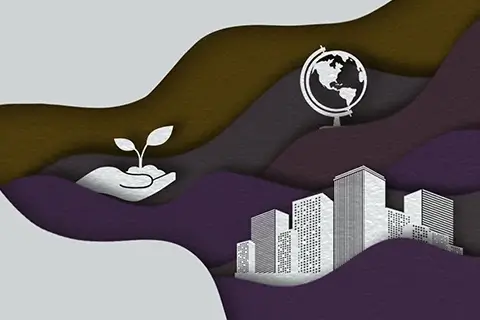Family Office trends to watch out for in 2023
article • Investment Management

Kshitij Kumar Pandey
2023-01-13 | 5 minutes
2022 was a difficult year for investors, with most asset types facing challenging conditions. Unfortunately, we do not foresee 2023 bringing any immediate respite. On the contrary, global growth will likely continue to slow down this year as central banks further tighten the monetary policy. In such a recession-threatened year, Family Offices across the globe will be navigating through the market volatility with caution. However, with a long-term and diversified asset allocation strategy, most uncertainties can be dealt with.
In 2023, we expect a few common themes to spring up in the family office landscape globally as well as in India.
Global Diversification
In 2022, we witnessed Family Offices setting up shops in Singapore and Dubai. Thanks to the friendly regulatory environment in the aforementioned countries, they have become the new haven for Family Offices. UHNIs will opt for global diversification as global equities will offer better entry points in 2023. In addition to the Liberalised Remittance Scheme (LRS), global investments are getting fuelled by liberalized regulations on overseas direct investment (ODI) and overseas portfolio investment (OPI).
Alternative Investments
Private equity has become the dominating focus area for Family Offices, and there is immense scope for expansion in the coming year. In a recent survey conducted among private equity and venture capital funds across stages, it was found that 70% of funds report an increased share of domestic LPs in number, except for funds that have seen oversubscription from international LPs. Most funds also reported an increased share of domestic LPs in terms of commitment value, particularly for funds that have GPs with a strong understanding of the Indian ecosystem.
Multi-Asset Portfolios
In a year that started with the gloom of recessionary trends globally, investors today want to look at preserving the gains - measly or otherwise, rather than focus on capital growth at least for the next 6-12 months. With long tenure fixed income portfolios bleeding through most of 2022, a skewed approach toward either of the two major asset classes may not work. Multi-asset portfolios and solutions are back in focus and for the right reasons. Equities could play truant, the peak of interest rates may still be away and while gold has shown some shine, it is still prudent to look at safer government bonds whether domestic or global. The best solution remains to use the asset allocation model with allowance for either of the two asset classes (plus gold) to be played tactically. There was never a time to forget risk-vs-reward, this time is no different.
Focus on ESG
SEBI recently launched Business Responsibility and Sustainability Reporting (BRSR) - a new framework to increase the transparency of corporate disclosures around sustainable practices and help market participants explore impact investing risks and opportunities better. From the FY 2022-23, it is mandatory for the top 1000 listed companies in India to be compliant with BRSR. For other listed companies including those that have listed specified securities on the Small and Medium Enterprises (SME) exchange, it is voluntary. We expect BRSR to play an important role in increasing Indian Family Office’s ESG participation.
Tech Adoption
While the concept of Family Offices is on the rise globally, they are yet to align with the rapid technological enhancements in the world. Considering the complexities of investment decisions they have to make on a regular basis, Family offices need scalable solutions and sophisticated platforms that help them do more with fewer resources and lead to better decision-making insights. It is imperative for Family Offices to think tech-first. In 2023, we expect Family Offices to upgrade to purpose-built platforms, with data cores designed for multi-asset class portfolio management and accounting.
Despite the global slowdown, the popularity of Family Offices will continue to surge in 2023. It will be interesting to observe how the ultra-wealthy navigate through the recessionary turmoil.







.webp&w=1920&q=75)
.webp&w=1920&q=75)





